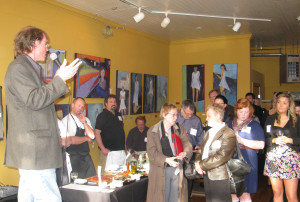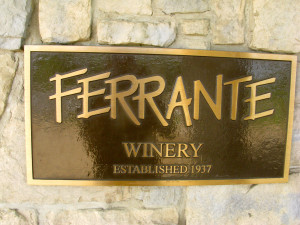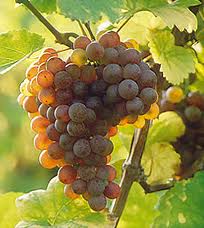Great Lakes Gewurztraminer: Easier to Drink Than Say
The temptation to skip over Gewurztraminer due to its difficult pronunciation may be great for many wine drinkers. Some people within the industry even speculate that the name might be a little intimidating for people to pronounce, perhaps preventing them from even trying the wine. However, customers might want to put aside their embarrassment and give it their best shot. The reward is definitely worth it.
‘It’s not a massive seller. Most people don’t know about it,” says Cooenraad Stassen. Stassen is the winemaker at Brys Estate Vineyard and Winery on the Old Mission Peninsula in northern Michigan. Brys Estate’s Gewurztraminer is a German style semi-sweet wine, with floral and tropical aromas. Stassen states that this type is more palatable to consumers than the drier French style.
Brys Estate has also experimented with a French Alsation style wine, which he described as dry with more of a perfume aroma. He has also blended the German and French styles together. Stassen’s Northern Michigan Gewurztraminer has won several awards, including double gold at the 2012 San Francisco International.
Brys Estate’s Gewurztraminer is estate grown and totals one acre. The grapes are grown on a VSP style trellis system and are grafted on to 3309 rootstock. According to Stassen, the variety produces small yields of thick-skinned grapes, with compact clusters. The grapes are harvested according to taste, and usually end up at around 22-23 brix.
During the winemaking process, Stassen limits the skin contact after crushing the grapes to balance the phenolic compounds. He ferments the wine to about 2-3% residual sugar.
On the neighboring Leelanau Peninsula, winemaker Charles Edson of Bel Lago Vineyard and Winery is also working with this grape. He says that their wine is patterned after Alsatian Gewurztraminer, and is best when it has spent at least a couple years in the bottle. ‘For me, it’s all about balance: chemistry, flavors, texture, and with the Gewurztraminer, longevity.” He adds that it ages beautifully and that their older vintages are still showing well.

Charles Edson of Bel Lago addresses the media at a 2012 Leelanau Peninsula Vintners Association Event
Edson states that Bel Lago’s grapes are also harvested according to taste. There are three main flavor profiles that they are looking for: floral, described as rose petal, tropical fruit, described as lychee and grapefruit, and spice, described as white pepper. He says that you can usually get a good idea of the flavor development by tasting the grape. This, along with the structural considerations, leads Edson to harvest as late as possible. ‘I believe that Gewurz makes a better wine when the pH is at least 3.5, so late harvesting works out well.”
According to Edson, the late harvest usually results in a high sugar content, around 24-25 brix. He believes that a little sweetness pushes the aromas and helps flesh out the structure and viscous texture of the wine. This makes for a finished wine that when made in a semi-dry style, often ends up with 14% alcohol content. In some cases, it has been as high as 15.5%
Further south in Geneva, Ohio, Ferrante Winery is making award winning Gewurztraminer. According to owner Nick Ferrante, the wine is usually made into a dry, Alsatian style. This year however, due to the high sugar content of 24 brix (usually 22-23.5), he expects to see some residual sugar after fermentation. ‘We add tartaric acid to increase TA and decrease pH.” He adds that the tank fermentation and aging keeps the aromas and flavors clean, fruit forward, and crisp. No barrels are used in the process.
According to Ferrante, their vines are grafted onto 101-14 rootstock, and grown on a VSP trellis system. He says that the vines are pruned to three canes each, with twelve buds per cane. The result is a crop of about 3-3.5 tons per acre. He states that Gewurztraminer has shown to be less winter hardy that the other white vinifera varieties that they have planted. ‘It is planted on a good site, near a wind machine.”
 Ferrante finds that while Gewurztraminer does not appeal to everyone, it does make a nice food wine. ‘It has very different aroma and flavor profiles than other vinifera whites. It has aromas of spicy, floral, lychee, citrus.” It sells at Ferrante Winery for $14.99.
Ferrante finds that while Gewurztraminer does not appeal to everyone, it does make a nice food wine. ‘It has very different aroma and flavor profiles than other vinifera whites. It has aromas of spicy, floral, lychee, citrus.” It sells at Ferrante Winery for $14.99.
Because many growing regions in California are too warm to produce Gewurtraminer with good acidity, the Great Lakes region has the potential to become a recognized leader of this aromatic favorite.



One of the most under appreciated wines anywhere and the Midwest is perfect for it. Thanks for bringing it up, hopefully more people will jump on it.
Personally , my least favorite to grow….crown gall, low yield, heavy vegetation, winter injury, etc….
I 2nd that…